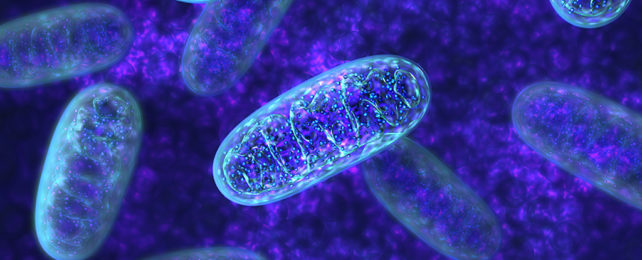Scientists have engineered a species of roundworm (Caenorhabditis elegans) to absorb light to live a significantly longer life.
By adding a light-sensitive trigger to power-converting organelles known as mitochondria, researchers from the US and Germany extended the time sufficient energy could be provided to the cells before aging processes took over.
While the scientists emphasize that solar-powered humans are nowhere on the horizon, they do say that their work could have important implications for understanding our own aging, and for treating diseases and health issues that we're more at risk of as we get older.
"We know that mitochondrial dysfunction is a consequence of aging," says Andrew Wojtovich, a physiologist from the University of Rochester Medical Center in New York.
"This study found that simply boosting metabolism using light-powered mitochondria gave laboratory worms longer, healthier lives."
Mitochondria facilitate chemical reactions based on the breakdown products of glucose, which results in a boost in adenosine triphosphate (ATP) – a universal energy-carrier for the body. As these reactions occur across the organelle's convoluted membranes, the efficiency of this process is known as membrane potential, and it decreases naturally with age.
In their new study, the scientists showed how a light-powered or 'optogenetic' proton pump could be used to move charged ions across the mitochondria membrane, giving the whole energy-conversion process a helping hand. This proton pump was developed from chemical reactions inside a fungus explored in an earlier study.
Both membrane potential and ATP production were improved, and the worms lived around 30 to 40 percent longer than normal. The researchers are calling their new engineering process mitochondria-ON or mtON.
"What we have done is essentially hooked up a solar panel to the existing power plant infrastructure," says physiologist Brandon Berry, from the University of Washington in Seattle. "In this instance, the solar panel is the optogenetic tool mtON."
"The normal mitochondrial machinery is then able to harness the light energy to provide the ATP in addition to the normal combustion pathway."
This is an important insight into the functioning of mitochondria, and how we might be able to affect it. There's still a lot that scientists don't know about these tiny power plants, though discoveries are regularly being reported.
What's of particular interest, and what this study addresses, is how the body starts to break down once mitochondria run out of steam.
Like the fruit fly Drosophila, C. elegans are often used to research basic biological principles that can then be applied to other organisms and animals. In other words, mtON may well work in bigger creatures too.
"We need to understand more about how mitochondria truly behave in an animal," says Berry. "First in worms, like the current study, but then in human cells in culture and in rodents."
"That way future research will be well informed to target the most likely players in human disease and aging."
The research has been published in Nature Aging.
